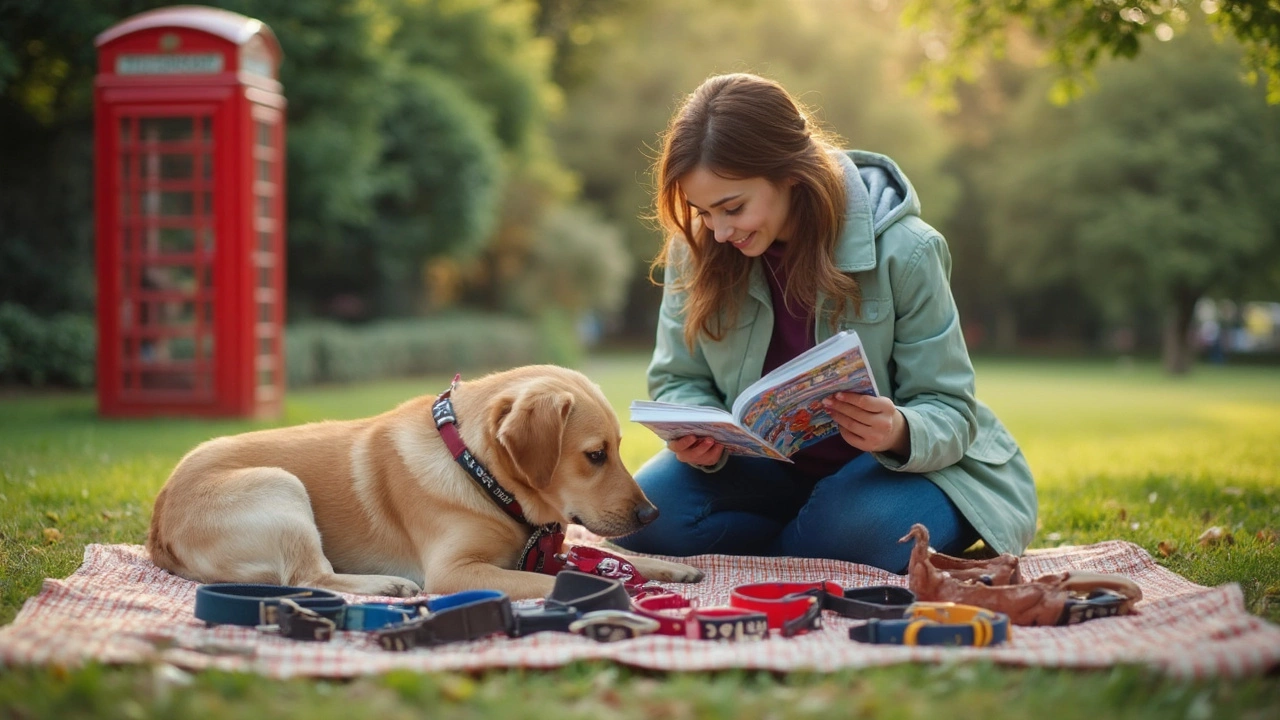Types of Dog Collars – What Every Dog Owner Should Know
If you’ve ever stood in the pet aisle, you know there are more collar choices than you can count. It’s easy to feel lost, but you don’t need a degree in pet fashion to pick the right one. Below we break down the most common collars, why you might choose each, and a few quick tips to keep your dog safe and comfortable.
Everyday Collars: Flat, Martingale & Breakaway
Flat collars are the classic leather or nylon bands you see on most dogs. They’re cheap, easy to put on, and work fine for dogs that don’t pull. Look for a collar with a sturdy buckle and a metal tag loop. If the collar slides around or leaves red marks, it’s either too loose or made from rough material.
Martingale collars have a limited slip‑stop design. They’re perfect for dogs with narrow heads, like Greyhounds, that can slip out of a flat collar. When the dog pulls, the second loop tightens just enough to stay on without choking. Always adjust the second loop so it tightens only a little—too tight is uncomfortable.
Breakaway collars are made for dogs who love to get into everything, especially small or toy‑obsessed pups. The safety clip releases under pressure, preventing choking if the collar gets caught on a fence or branch. They’re great for outdoor adventures, but remember they won’t stay on if your dog is a strong puller.
Specialty Collars: Training, Bark‑Free & Night‑Time
Training collars come in a few flavors: clicker‑compatible, gentle vibration, and the more controversial static models. In 2025 the top picks are those with a quick‑release latch and a low‑profile design that won’t irritate the neck. Use them only under the guidance of a trainer and pair them with positive reinforcement.
Bark‑free collars are the humane alternatives to traditional bark collars. Instead of shocks, they use a citronella spray or a soft vibration to interrupt barking. Many owners find these tools work when combined with basic training. If you’re trying to keep the peace on a condo balcony, a citronella collar can be a lifesaver.
Night‑time collars raise a different question: should you take the collar off when your dog sleeps? The short answer is yes, if the collar is a flat or martingale style and your dog isn’t wearing a tag with emergency info. Removing the collar at night reduces the risk of chafing and lets the skin breathe. Keep a tag on a lightweight, breakaway collar if you need ID while your dog is asleep.
Here’s a quick checklist for any collar purchase:
- Measure your dog’s neck twice—once snug, once loose—to get the right size.
- Choose a material that matches your dog’s lifestyle (nylon for rugged play, leather for a dressy look).
- Test the buckle or clip. It should snap shut easily but stay secure.
- Look for a reflective strip if you walk at dusk.
- Ensure the collar has a sturdy D‑ring for leashes and tags.
Remember, a collar is just one part of your dog’s safety kit. Pair it with a well‑fitted harness for pullers, a microchip for permanent ID, and regular vet check‑ups. With the right collar, your pup stays comfortable, safe, and ready for whatever adventure comes next.

Best Type of Collar for a Dog: How to Choose Right
Picking the right collar for your dog isn't just about looks—it's about safety, comfort, and control. This article breaks down different collar types and explains what works best for different dogs. You'll find tips based on real dog behavior and practical advice for every lifestyle. From daily walks to training sessions, the right collar can make all the difference. Get answers to common questions and learn what actually matters when shopping for your pup’s collar.
View more